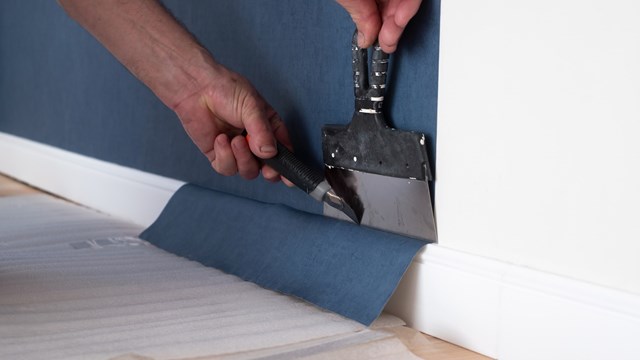
New York City is in a constant state of flux. At no time was this better illustrated than during the recent New Year’s Eve celebrations. Photographs of Times Square celebrations past were constantly flashed across television screens, but what Times Square was this? With the exception of the Paramount Building at 1501 Broadway, there was barely a recognizable landmark to be found. Were it not for the geographical layout of Broadway and Seventh Avenue, many of our older citizens would be hard-pressed to identify the theater district of 1940 with the millennial melee of 2000.
Neighborhoods throughout Manhattan are subjected to this same, strange metamorphosis, as well. Twenty-five years ago, you couldn’t pay a young couple to move to certain areas in Manhattan’s Upper West Side. Some old-time residents recall particular streets that were among the most dangerous, drug- and crime-infested areas in Manhattan. Those that lived there wanted to move out. Today, good luck finding a studio apartment in the area for under $2,000 per month.
Transformation Trend
Yesterday’s squalor has a way of turning in to today’s prime real estate. A stellar example of this is the dramatic change that has come over the Flatiron district and surrounding environs down to–and including–Union Square, one of the hottest neighborhoods to emerge in the past ten years. With the renovations of the Hugh O’Neal building at Sixth Avenue and 21st Street, and the introduction to the area of many commercial chain stores, such as Barnes and Noble (at both Sixth Avenue and 22nd Street, and Union Square North), Bed, Bath & Beyond, Old Navy, Today’s Man, and The Wiz, real estate prices have skyrocketed, leading many once commercial properties to be rezoned for residential use. One Seventy Fifth Avenue (at 22nd Street) is currently going through such a transformation from commercial to condo, with two- and three-bedroom apartments starting at $1.3 million and above.
"We tend to focus on properties south of 23rd Street," says Edward Baquero, managing partner with Landmark Developers, LLC in Manahttan. "Adaptive development has many advantages over new construction. First, you can turn around a property in eight or nine months, as opposed to a year or more for new development." Baquero notes that SoHo and TriBeCa are still two of the hottest areas of development in Manhattan, and says that by retrofitting existing properties in the area with the amenities of new construction–the type you would find, for example, on the Upper East Side–he is able to offer quality living space at a lower price per-square-foot. "There is such great diversity of cultures down here, we’re finding even some of the established law firms and retail businesses from Uptown are eager to move into the area. It’s such a creative area, still full of galleries, and eclectic shops and restaurants. People want to live down here. With that in mind, our newest space offers residents 24-hour concierge service, wood-burning fireplaces, and wine cellars. Each apartment measures from 4,200 square feet for the smallest unit, up to 6,500 square feet."
New Developments
New York’s superheated economy has fueled the need for living space throughout the borough. As rents rise and prices soar, less expensive neighborhoods on the fringes of Manhattan’s established residential neighborhoods continue to be developed. Older buildings are being renovated and new buildings are springing up all over Manhattan. Prestigious old commercial buildings, including bank towers, have suddenly been transformed into residential buildings in the Wall Street area–several on John Street, another scheduled soon on Battery Place.
New construction continues on any buildable site. New developments include Trump’s 861-foot 90-story glass tower near the United Nations on 47th Street and First Avenue; Trump City over the old West Side railroad yard; and further development of Battery Park City. Dozens of smaller residential buildings are springing up in a variety of neighborhoods, for example, along the West Side Highway on the Hudson River fringe of Greenwich Village.
While the Battery Park City and Trump developments take place in well-established neighborhoods, Silverstein’s River Place I and II, a twin-tower rental community of 1800 units at 42nd Street and Twelth Avenue, breaks new ground and extends Manhtattan’s residential neighborhoods farther west.
Neighborhoods on the Rise
Consistent with this trend is the recent renaissance of the Lower East Side. Forced downtown by high prices and lack of affordable space, many young entrepreneurs have chosen the Lower East Side as their business-and-residential area of choice. A loft-style property at 18 Orchard Street, near Canal, recently sold for an impressive $1.1 million. Not bad for an area once thought to be out of the race for big-money development. Pam Liebman, director of marketing for The Corcoran Group, said that the Lower East Side, now dubbed LoHo by developers, has the potential to be as hot an area as SoHo was 20 years ago, or TriBeCa only ten years ago. "Properties are being snatched up as fast as they appear on the market. Developers have been aggressively courting landlords and merchants to sell space for residential conversion, and we expect to see the prices rise in accordance with the strong demand."
The backlash against this new development is coming from those who fear forced gentrification, but, according to Liebman, "developers aren’t displacing old-time residents, but upgrading space that has been vacant for decades because landlords couldn’t afford to keep up with building codes and regulations. Remember, these buildings used to be tenements. Now they are being transformed into spacious living quarters. It’s exciting to see an area once forgotten coming back to life."
Monica Cordero, a real estate agent with Maison International, a full-service real estate firm in Manhattan, says that besides the boom in LoHo, SoHo and TriBeCa, Midtown Manhattan–in particular the Clinton area–is seeing a tremendous resurgence of interest in co-op and condo buyers. "I just sold a 700-square-foot apartment on Tenth Avenue and 47th Street for $200,000. That figure would have been laughable only a few years ago"–which pretty well sums up the changes that generally happen in New York. Whether it’s taking an existing structure and breathing fresh air into its stale lungs, converting once-thriving office space into luxury apartments, or attempting to construct the largest residential structure in the city, change is always the name of the developer’s game.
Mr. Duke is a freelance writer living in Manhattan.






Leave a Comment